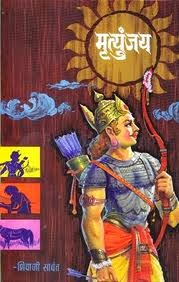1857 Indian Freedom Struggle Memorial
The role of Bombay in the 1857 Sepoy Mutiny can best be described as modest. The Mutiny originated in parts of Northern India which at a later stage in history came to be known as the first struggle for Indian independence. Bombay has always been associated with trade and commerce in its veins and it reacted in a very characteristic manner when the news of the Rising broke out: the stock market bucked.
The Indian Freedom Struggle Memorial is dedicated to the martyrs of the 1857 Sepoy Mutiny in the form of an obscure plinth located on a fence right outside the underground subway opposite the Mumbai Chhatrapati Shivaji Terminus. It is dedicated to two martyrs Mangal Cadiya and Sayyad Hussein.
As the superintendent of the police in Bombay Charles Forjett ordered two sepoys should be tied to mouth of cannon and be blown to bits. He was fluent in the local languages and an expert in disguise and often walked the streets to eavesdrop on conversations to get a sense of trouble brewing. The grassroots intelligence rarely failed him and during the months of the Mutiny, he was more vigilant than ever. It came to his ears that there was growing dissent in the infantry and meetings were being held in the home of a certain Ganga Prasad. Dressed up in a black native dress, Forjett is said to have reached a house in Sonapur (near Metro Cinema) and heard through a broken wall of a group plotting an attack on the Englishmen on the night of Diwali.
On October 15 1857 at the Esplanade Cross (now Azad Maidan), the two conspirators, the strapping Drill Havaldar Sayyed Hussein of the Marine Battalion and Sepoy Mangal Cadiya of the 10th Native Indian Regiment were trussed with their backs to the cannon. The execution of these two officers took place in front of packed crowds, both of Indian and European origin which was Forjett's way of broadcasting the message that any dissent would be dealt with in a similar fashion. The findings of the Court read out with the order delivered as: "There was a sharp report, a sudden flash of fire and when the clouds of smoke blew away, there lay scattered the bloody remnants of the two men."
History came round a full circle a whole century later, when in Independent India, the Esplanade Cross was renamed as the Azad Maidan to memorialize the numerous freedom speeches that Mahatma Gandhi and others made during the freedom struggle and to signify the importance of the ground in the Sepoy Mutiny. The plinth dedicating a memorial came up in 2007 to commemorate the 150 years of the Sepoy Mutiny which began in 1857 and to honour the sacrifice of these two martyrs.
The Indian Freedom Struggle Memorial is dedicated to the martyrs of the 1857 Sepoy Mutiny in the form of an obscure plinth located on a fence right outside the underground subway opposite the Mumbai Chhatrapati Shivaji Terminus. It is dedicated to two martyrs Mangal Cadiya and Sayyad Hussein.
As the superintendent of the police in Bombay Charles Forjett ordered two sepoys should be tied to mouth of cannon and be blown to bits. He was fluent in the local languages and an expert in disguise and often walked the streets to eavesdrop on conversations to get a sense of trouble brewing. The grassroots intelligence rarely failed him and during the months of the Mutiny, he was more vigilant than ever. It came to his ears that there was growing dissent in the infantry and meetings were being held in the home of a certain Ganga Prasad. Dressed up in a black native dress, Forjett is said to have reached a house in Sonapur (near Metro Cinema) and heard through a broken wall of a group plotting an attack on the Englishmen on the night of Diwali.
On October 15 1857 at the Esplanade Cross (now Azad Maidan), the two conspirators, the strapping Drill Havaldar Sayyed Hussein of the Marine Battalion and Sepoy Mangal Cadiya of the 10th Native Indian Regiment were trussed with their backs to the cannon. The execution of these two officers took place in front of packed crowds, both of Indian and European origin which was Forjett's way of broadcasting the message that any dissent would be dealt with in a similar fashion. The findings of the Court read out with the order delivered as: "There was a sharp report, a sudden flash of fire and when the clouds of smoke blew away, there lay scattered the bloody remnants of the two men."
History came round a full circle a whole century later, when in Independent India, the Esplanade Cross was renamed as the Azad Maidan to memorialize the numerous freedom speeches that Mahatma Gandhi and others made during the freedom struggle and to signify the importance of the ground in the Sepoy Mutiny. The plinth dedicating a memorial came up in 2007 to commemorate the 150 years of the Sepoy Mutiny which began in 1857 and to honour the sacrifice of these two martyrs.



Comments